The AI workforce is a team of diverse AI agents equipped with AI tools. These agents work collaboratively in a multi-agent system to solve complex tasks.
The pace of innovation in artificial intelligence is accelerating at an astounding rate. Technologies that were once only theoretical are now becoming practical realities. Companies across industries are increasingly adopting AI to automate tasks, enhance productivity and create new possibilities.
There is one particular area in AI that has even captured the fascination of legendary technologists like Bill Gates and Vinod Khosla, that is AI agents - A type of AI system that is designed to act autonomously and accomplish even complex tasks on behalf of a user, it is able to plan, reason, react and make actions.
In less than ten years each American will have a dozen or more AI agents constantly running around the net with AI that is 10x more powerful.
- Vinod Khosla, early investor in OpenAI, founder of Suns Microsystems and Khosla Venture.
Agents are coming. In the next few years, they will utterly change how we live our lives, online and off.
- Bill Gates, Founder of Microsoft.
With this increasing adoption and development of AI agents, the birth of a new segment to the workforce is becoming increasingly important - the AI workforce. Every company will have not just a human workforce but also an AI workforce working in tandem. Teams will only be limited by their ideas, not their size.
How do you build an AI workforce?

To build an AI Workforce there are three core building blocks to it:
- AI agents: they are digital workers that given instructions will complete a task. These AI agents are powered by LLMs such as GPT, Mistral, Claude and more. These need to be meticulously created to be effective. They need to be exceptionally well-instructed and well-constructed so they can run with any technical errors. This is before we get towards human level reasoning, thoughts, and actions
- Tools for the Agents: In order for Agents to ascend from just generating text it needs to be given access to AI tools such as “google search”, “use salesforce”, “run code” to give it real superpowers to automate tasks.
- Multi-agent system: In order for agents to work collaboratively like a team, you’ll need a multi-agent system, which allows different types of diverse agents to interact and speak with each other. A team of AI agents will always be more effective than 1.
An effective AI workforce is one that has a diverse team of AI agents that are domain experts, each equipped with powerful and relevant tools for that domain and working in a multi-agent system.

What are AI Agents?
AI agents can be broadly classified into two categories based on their level of autonomy and the nature of their interaction with users: Co-pilot and Autopilot.
Co-pilot Agents - AI in the Loop
Co-pilot agents are a widespread form of AI agents, designed to work alongside humans and augment our productivity. AI in the loop refers to the practice of actively involving AI systems in the decision-making process, while still maintaining human oversight and control. They are integrated into various tools and platforms, assisting with tasks and streamlining workflows. In fact, according to a recent report, the global AI co-pilot market is projected to reach $23.1 billion by 2027, growing at a Compound Annual Growth Rate (CAGR) of 38.4% during the forecast period. Additionally, a survey by Gartner found that 75% of organizations have already deployed or plan to deploy co-pilot agents in the next year.

Here are some examples of co-pilot agents in use:
- Github Co-pilot for coding. Embedded directly into visual studio code and github to help developers write effective code more quickly and focus on the core parts of building durable software such as logic.
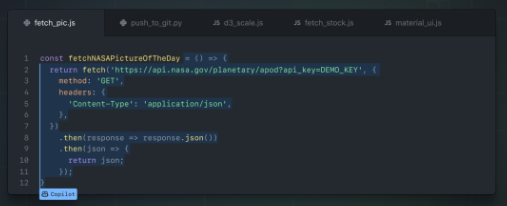
- Microsoft 365 Co-pilot for presentations. Embedded directly into Microsoft suite like Microsoft PowerPoint to help you create PowerPoints more effectively
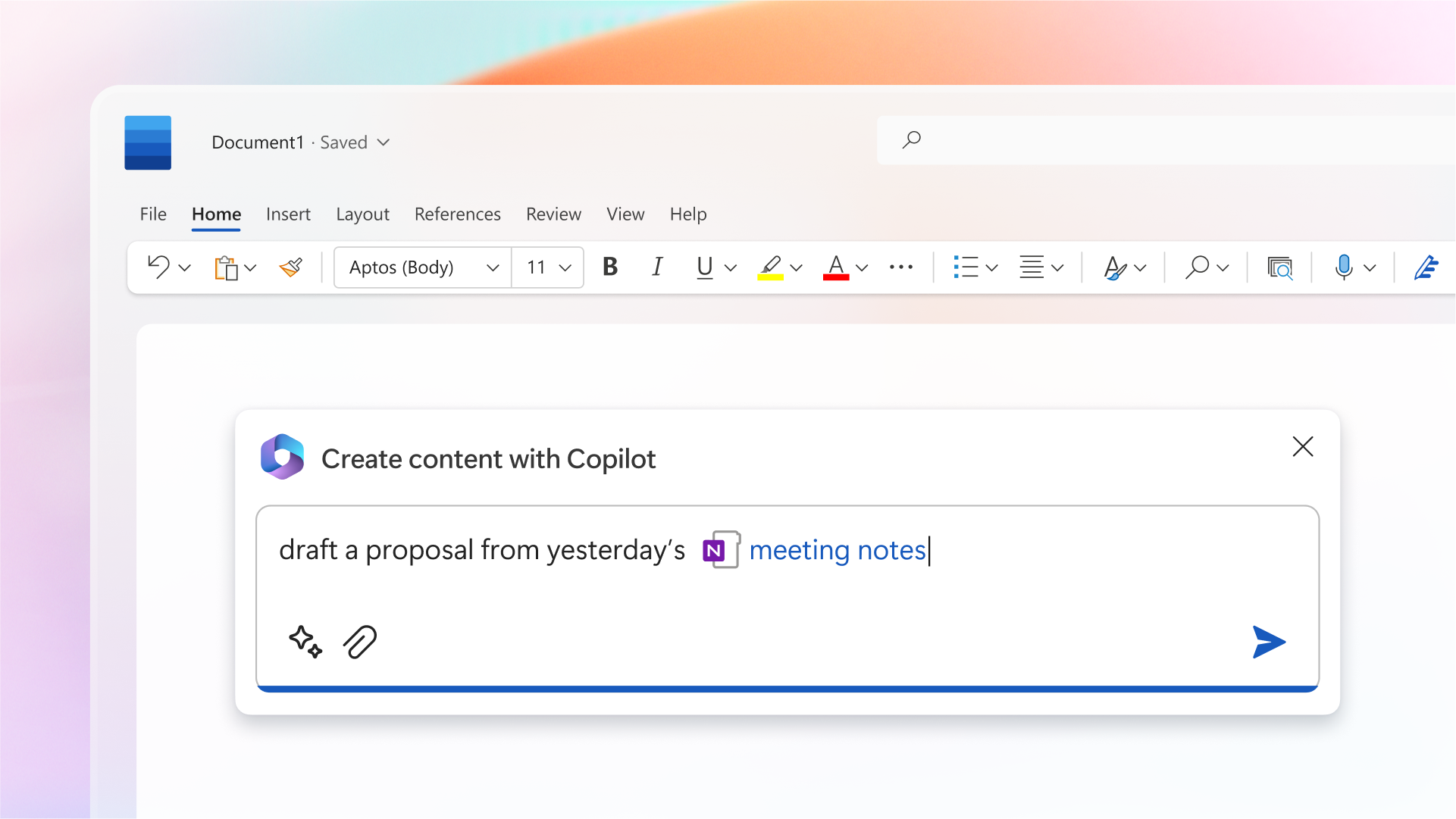
- Notion AI for writing. Embedded directly into notion to help you create notion documents more effectively.
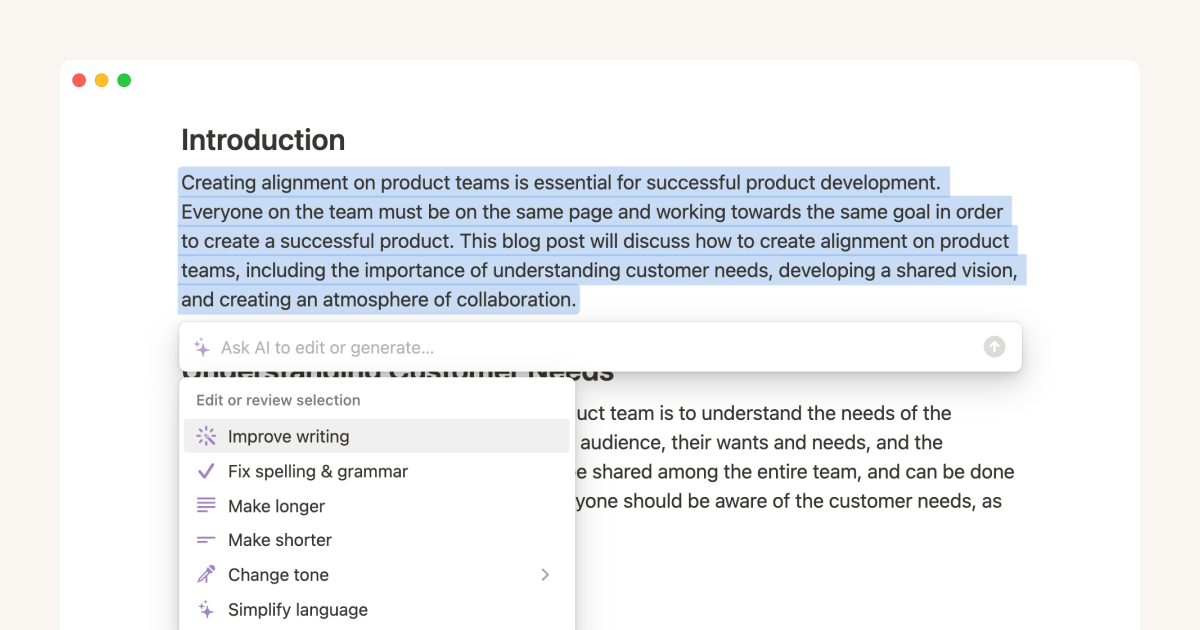
Autopilot Agents - Human in the Loop
Autopilot agents different to co-pilots in that they are designed to act autonomously, interacting with tools as a human would, and instead require humans to supervise or manage them. Autopilot agents represent a significant advancement in AI technology, capable of autonomously completing tasks with minimal human intervention. However, even with their advanced capabilities, these agents are not yet perfect and sometimes require human oversight to ensure accuracy and precision. This is where the "human-in-the-loop" approach comes in, allowing humans to review and correct the decisions made by autopilot agents. This collaborative approach enables the benefits of automation while still leveraging human judgment and expertise, and is particularly useful in high-stakes applications such as healthcare, finance, and transportation.
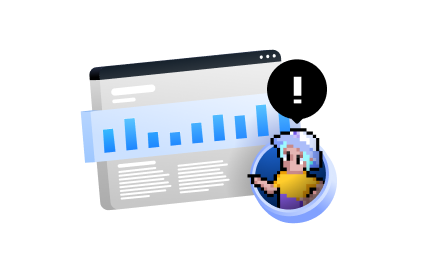
Klarna recently announced that their customer support autopilot chatbot handled 2.3 million customer service chats in 35 languages worldwide during its first four weeks. This volume equates to the workload of 700 full-time human agents. Klarna reported that their autopilot achieved customer satisfaction ratings equal to its human team members. It also showed higher accuracy than humans with a 25 per cent reduction in repeat inquiries. Moreover, it can resolve tickets in less than 2 minutes, compared to the previous benchmark of 11 minutes.
AI in the Loop (AITL) versus Human in the Loop (HITL)
As AI technology continues to advance and become increasingly integrated into various aspects of our lives, it's essential to understand the different approaches to human-AI collaboration. Two prominent paradigms have emerged: Human in the Loop (HITL) and AI in the Loop (AITL). While both approaches aim to leverage the strengths of humans and AI, they differ significantly in their underlying philosophy, application, and benefits.
Key differences:
- Level of autonomy: HITL has higher autonomy, as AI makes decisions and humans only review and correct when necessary, whereas AITL has lower autonomy, as AI acts as a co-pilot, providing recommendations for human decision-making.
- Role of humans: In HITL, humans have a reviewing and correcting role, while in AITL, humans have a decision-making role, with AI providing support.
- Decision-making process: HITL involves AI making decisions, followed by human review and correction, while AITL involves humans making decisions, with AI providing recommendations.
- Applications: HITL is suited for applications where AI is highly advanced and accurate, such as data processing and analysis, while AITL is suitable for complex decision-making and creative tasks.
- Benefits: HITL ensures efficiency and accuracy, while AITL enhances human capabilities and provides additional insights.
How to make an effective agent?
Creating an effective AI agent requires a thoughtful and systematic approach. It involves combining cutting-edge technologies like machine learning and natural language processing with a deep understanding of the agent's intended goals, tasks, and environment. By carefully designing and training an AI agent, developers can unlock its full potential and create a powerful tool that enhances productivity, decision-making, and overall performance.
.png)
There are 5 core components:
Large Language Model (LLM)
At the heart of any AI agent is a powerful foundational model, usually what's known as a large language model. Unlike simple rules-based chatbots, LLMs like GPT4 and Anthropic's Claude can understand nuanced language, generate coherent long-form text, and even execute logical reasoning when prompted appropriately.
System Prompt
The system prompt serves as the personality and reasoning patterns for the AI agent. Carefully engineered prompts prime the LLM to respond appropriately as that agent, whether as a helpful assistant, curious child, or domain expert. There are many kinds of different system prompts that can enable different kinds of reasoning behaviour such as Chain of thought, Tree of thought, ReAct and more.
Memory
In addition to analyzing the current input text, effective AI agents need memory of past interactions and context. This could be a simple short-term memory to recall the last few exchanges or a more comprehensive long-term memory component. With memory, agents can have true conversations that reference shared history and maintain logical consistency.

Feedback
It is crucial that the Agent is receiving feedback from the user on good and bad actions. This feedback can then be incorporated via fine-tuning the model using methods like RLHF.
Tools for agents
While LLMs can generate remarkable text, agents need additional tools to take meaningful actions. This could include APIs to look up information, integrate with calendars, or complete transactions. With tools, agents can go beyond chat to truly assist users across applications.
Together, these four components enable AI agents that understand, learn, reason, and act in an intelligent manner. The rapid evolution of these core capabilities is bringing us closer to artificial general intelligence. The next generation of AI agents will collaborate with humans seamlessly
Tools for AI agents - Giving Agents the ability to interact with the world
In order for agents to ascend from just generating text and interacting with the real world, it needs to be given access to tools.
For those with an engineering background you can think of tools like functions. They are ‘skills’ that an agent can call and execute when it deems the task requires it.
There are 3 core types of tools that is useful in making an agent powerful.
- Source of truth tools. These are knowledge bases, files where the agent can access data about different topics to answer new questions. E.g. “Legislation lookup”, “HR manual”

- Functional tools. These are APIs / integrations to run some sort of action. E.g. “Send an email”

- Skill based tools. These are use case specific workflows constructed by domain experts that can be made up of multiple LLMs each with expert crafted prompts, and other tools. E.g. “How to reply to an NDA request professionally.”

Here are some examples of tools being utilized in both a co-pilot and autopilot system:
This co-pilot example shows a tool that can find the job title, company, and company size of a person given an email address. This is a GPT built in ChatGPT using our Custom Actions for GPTs feature.

This auto-pilot example shows a writing agent that has the tools for Google Search and Website Scraping. So they can do desk research using Google and then scrape the content from the results to summarize and help them write an article. This is built in Relevance AI.
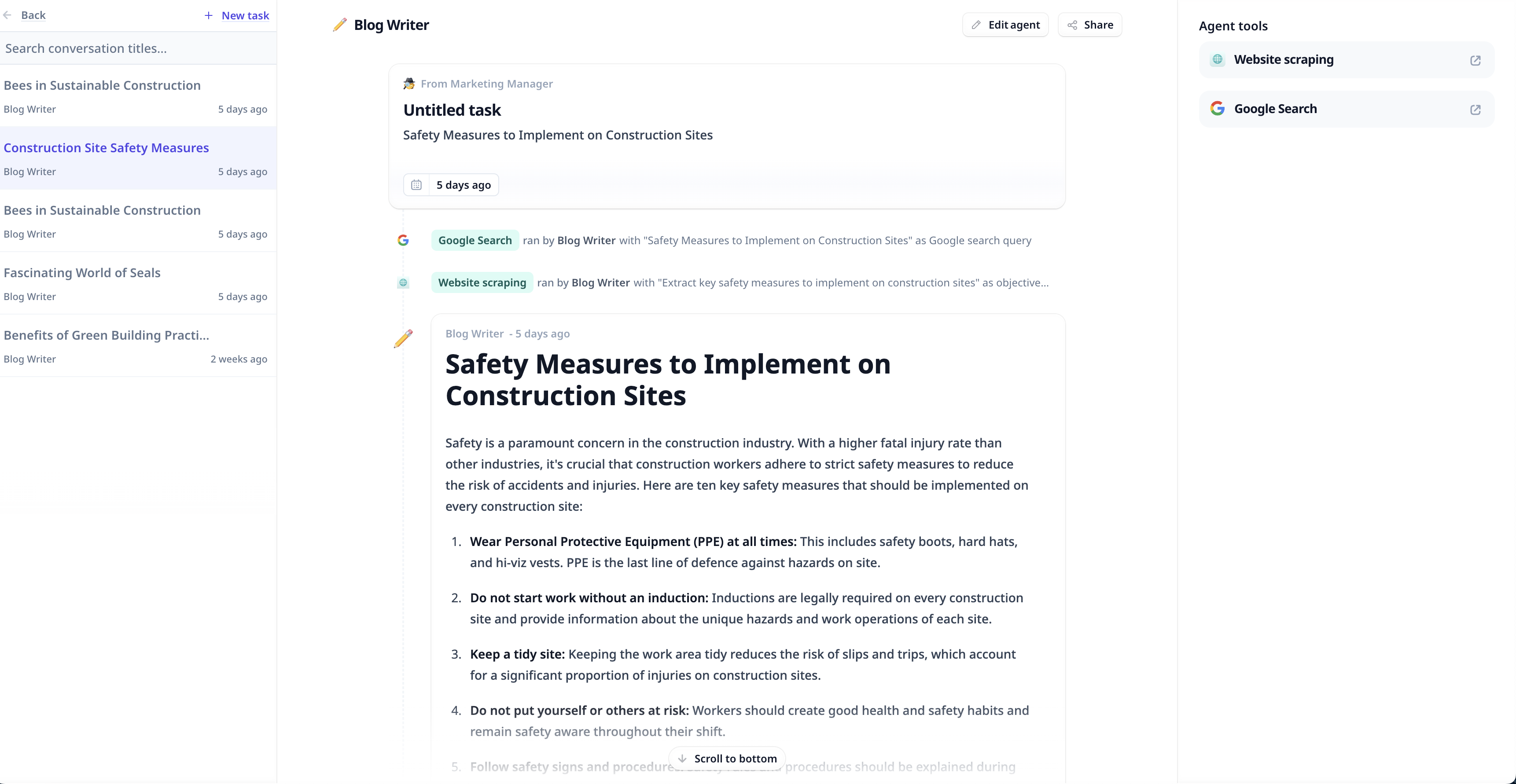
What are Multi-agent Systems?
Often the work we do in teams require expertise from different disciplines in order to effectively complete a task. For example when you are launching a very simple feature of a product you need. A product marketer to manage the launch, a content creator to write a landing page and help documentation, a designer to design the landing page, a data analyst to report on it’s usage so you can see if it’s been effective. If you only had the skills of a content writer on this project, you would miss out on the benefits of visual communication and the feedback loop you get from data.

❌ Avoid using any agents in that can only operate in silos you would be missing majority of the compounding effects that the AI workforce can bring.

In order for agents to be effectively work on complex tasks, you need a multi-agent system. There are many different types of multi-agent system. Here are some examples:
Assembly line - Each agent completes their task sequentially given a SOP. Great for process driven task where the process is well figured out but requires a lot of reasoning to decide which path of a process to go down.

Omni-direct - All agents are in 1 meeting room constantly speaking to one another. Great for creative tasks.
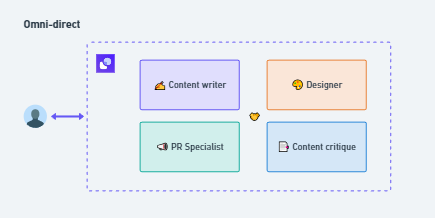
Leader driven - A leader agent creates and adjusts the plan and coordinates majority of the communication and subtasks to be completed. Its best when both creativity and process is required.
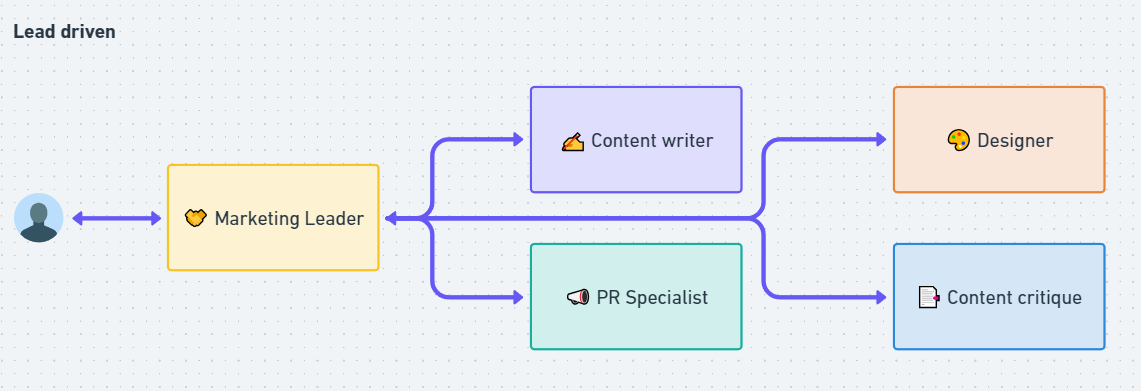
Creating an AI workforce
The importance of an AI workforce and AI agents in today's world is growing rapidly. As artificial intelligence continues to advance, companies are harnessing the power of AI agents to automate tasks, increase productivity, and even create new possibilities. These AI agents, acting as digital workers, are capable of performing complex tasks autonomously, contributing to the emerging concept of an AI workforce. Such a workforce, which works in parallel with human teams, is becoming an essential component in many industries, revolutionizing the way we work and conduct business.
Creating an effective AI workforce involves numerous critical elements to ensure the efficiency of each AI agent. This necessitates the human workforce to encapsulate their domain expertise into prompts and tools, while continuously observing and providing feedback. Doing so allows the human workforce to delegate highly repetitive tasks to the AI agents, enabling them to focus on tasks that only humans can perform.
However creating an AI workforce can be easier, thats why we have built at Relevance AI. You can sign up here and try it out.
Building the business case for the AI Workforce - ROI?
Building a strong business case for an AI workforce requires a clear understanding of its potential to solve business problems, generate measurable returns, and overcome implementation challenges. This guide explores how to identify opportunities, quantify ROI through key metrics like efficiency gains and cost savings, and examines real-world success stories from customer service and operations. We'll also address critical challenges such as data quality and change management, emphasizing that a comprehensive approach to AI integration is essential for long-term value and successful business transformation.

Identifying Business Problems and Opportunities
Successful AI workforce business cases often emerge from operational inefficiencies that create bottlenecks or consume disproportionate resources. For example, companies like Uber have leveraged AI agents to improve employee productivity and customer service, while Toyota's AI platform enables factory workers to develop machine learning models, reducing man-hours and increasing operational efficiency. These implementations succeeded because they addressed specific, measurable problems with clear success criteria.
The key to identifying viable opportunities lies in conducting thorough process audits that reveal where human workers spend time on routine tasks that could be automated, where errors occur frequently due to manual processes, or where 24/7 availability would create significant value. Organizations should also consider areas where AI can enhance human decision-making through better data analysis and pattern recognition.
Core Metrics for Measuring Return on Investment
Essential KPI metrics fall into three primary categories: efficiency gains, cost savings, and revenue impact.
Efficiency metrics focus on productivity improvements and time savings achieved through AI workforce implementation. Key indicators include labor cost reduction from decreased overtime and optimized staffing, schedule creation efficiency that saves management time, and productivity improvements measured through metrics like sales per labor hour or service delivery times. These metrics provide concrete evidence of operational improvements that translate directly to financial benefits.
Cost savings calculations must account for both direct and indirect cost reductions. Direct savings include reduced labor costs, decreased error rates that eliminate rework expenses, and lower administrative overhead. Indirect savings encompass improved compliance adherence that avoids regulatory penalties, reduced employee turnover costs due to improved job satisfaction, and decreased training expenses as AI agents handle routine tasks that previously required extensive human training.
Revenue impact measurements capture how AI workforce solutions contribute to top-line growth. This includes increased customer satisfaction scores that drive retention and referrals, faster response times that improve conversion rates, and enhanced service availability that captures previously lost opportunities. Companies like Klarna have demonstrated significant revenue impact, with their AI assistants handling the equivalent work of 700 full-time agents while reducing repeat inquiries by 25% and improving customer satisfaction through faster resolution times.

Real-World Examples: How Companies Achieve ROI from AI Agents
Relevance AI Case Study: Send Payments
See how Send Payments, a global payment infrastructure provider, built a network of AI agents with Relevance AI to automate lead qualification, compliance, and CRM workflows - saving 40+ hours a week and delivering 24/7 customer service.
From timezone challenges to manual processes, this case study shows how agentic automation helped the team scale with confidence, to now thinking as an AI-first company.
Read full blog post here.
Relevance AI Case Study: Qualified
Discover how Qualified built an AI workforce of 50+ agents with Relevance AI - unlocking $10M in pipeline and transforming how their team works.
From automating BDR outreach to streamlining demos and data workflows, this case study breaks down the impact of agentic automation across the business.
Read full blog post here.
Relevance AI Case Study: Safety Culture
Discover how SafetyCulture achieved remarkable success with Relevance AI's flagship AI Agent, Bosh, which:
- 3x'd meetings booked at 50% the cost per meeting.
- 2x'd the number of qualified opportunities.
Read full blog post here.
AI in Customer Service
The customer service sector has emerged as one of the most successful areas for AI workforce implementation, with numerous companies achieving substantial ROI through intelligent agent deployment. Motel Rocks, a fashion brand, exemplifies this success through their implementation of Zendesk Advanced AI. Their chatbots deflected 43% of customer tickets and reduced overall ticket volume by 50%, while simultaneously achieving a 9.44% increase in customer satisfaction scores. The AI system also provided mood indicators for customers, enabling human agents to deliver more personalized service when needed.
Camping World faced a surge in customer calls and deployed IBM's cognitive AI tool to create an AI assistant named Arvee. Operating 24/7, this assistant increased customer engagement by 40% and reduced wait times by 33 seconds per call. Most significantly, agent efficiency improved by 33%, demonstrating how AI workforce solutions can enhance rather than replace human capabilities. The continuous availability of AI agents provided value that would have been impossible to achieve cost-effectively with human agents alone.

Klarna's implementation represents perhaps the most impressive scale of AI workforce deployment in customer service. Their AI assistants handle the equivalent work of 700 full-time agents, reducing repeat inquiries by 25% and solving customer issues in less than 2 minutes on average. The system supports communication in over 35 languages, dramatically expanding the company's ability to serve global customers without proportional increases in staffing costs. This implementation demonstrates how AI workforce solutions can enable business scaling that would be prohibitively expensive with traditional human-only approaches.
Telstra's Ask Telstra system, built on Microsoft Azure OpenAI, achieved 20% fewer follow-up calls and improved agent effectiveness by 90%. Bank of America's virtual assistant Erica has surpassed 1.5 billion interactions, significantly improving customer engagement while reducing operational costs. These examples consistently show that successful AI customer service implementations achieve ROI through a combination of cost reduction, efficiency improvement, and enhanced customer satisfaction.
Build an AI Agent for Customer Support on Relevance AI
In this Relevance Live session, Alexandra Waite, Support Team Lead at Relevance AI, walks you through building an AI Agent for Case Review - from setup to practical use cases.
You’ll also hear insights from the live Q&A, where Alex answered questions about: How support teams can use AI agents day-to-day, Tips for improving agent accuracy and usefulness, Ways to scale AI in customer support without losing the human touch.

AI in Operations and Supply Chain
Supply chain and operations represent another area where AI workforce implementations have delivered exceptional ROI through improved forecasting, optimization, and automation. IKEA's implementation of machine learning for demand forecasting integrates sales data, promotional information, and weather patterns to improve demand accuracy and streamline inventory management. This comprehensive approach to data integration enables more precise planning and reduces both stockouts and excess inventory costs.
Coca-Cola's real-time demand forecasting system utilizes AI to align production schedules with actual market demand, reducing stockouts and optimizing production efficiency. This alignment with real-time demand has improved service levels while reducing waste, demonstrating how AI workforce solutions can simultaneously improve customer satisfaction and operational efficiency. The system's ability to process and respond to market signals faster than human analysts provides a significant competitive advantage.

DHL's AI optimization of logistics operations has improved on-time deliveries by 15% while reducing operational costs. The predictive analytics capabilities enable proactive management of potential issues and efficient scaling of operations based on demand patterns. Amazon's comprehensive embedding of AI across its supply chain, from warehouse automation to predictive delivery routing, has reduced shipping delays and operational costs while enabling the scale of operations that defines the company's competitive position.
These supply chain implementations consistently demonstrate ROI through improved accuracy, reduced waste, enhanced efficiency, and better customer service. The ability of AI agents to process vast amounts of data and identify patterns that human analysts might miss creates value that compounds over time as systems learn and improve.
Overcoming Challenges in Proving ai automation ROI
Data Quality, Change Management, and Adoption Barriers
Data quality represents one of the most significant challenges in proving AI automation ROI, as poor data quality can impair model performance and lead to inaccurate ROI calculations. Common data issues include inconsistent formats, missing values, outdated information, and data silos that prevent comprehensive analysis. These problems can undermine AI system effectiveness and make it difficult to demonstrate clear value creation.
Organizations must implement robust data governance frameworks that include regular data audits, standardized data collection processes, and automated data cleaning tools. Establishing centralized data repositories with clear data quality standards ensures that AI systems have access to reliable information for decision-making. The investment in data quality infrastructure often represents a significant portion of AI implementation costs, but it's essential for achieving reliable ROI measurements.
Change management and adoption barriers often stem from employee fears about job displacement and lack of understanding about AI's role in the organization. Resistance to AI adoption can significantly impact ROI by reducing system utilization and effectiveness. Successful organizations address these challenges through transparent communication that emphasizes AI as a tool to augment rather than replace human capabilities.
Training programs that enhance existing skillsets and provide hands-on experience with AI tools are essential for overcoming adoption barriers. Engaging employees in the AI journey through workshops, feedback sessions, and collaborative development processes fosters a culture of acceptance and innovation. Organizations that invest in comprehensive change management typically see higher AI adoption rates and better ROI outcomes.

Measuring Intangible Benefits and Long-Term Value
Quantifying intangible benefits represents a significant challenge in AI ROI measurement, as many of the most valuable outcomes from AI workforce implementation don't appear directly on financial statements. Employee satisfaction, innovation capacity, strategic agility, and enhanced decision-making quality all contribute to long-term value creation but require sophisticated measurement approaches.
Employee satisfaction can be measured through regular surveys and feedback mechanisms that track changes in job satisfaction, engagement levels, and retention rates. Innovation capacity can be evaluated by tracking the number of new ideas generated and implemented, the speed of product development cycles, and the organization's ability to respond to market opportunities. Strategic agility can be assessed through decision-making speed, market responsiveness, and the ability to adapt to changing conditions.
These intangible benefits often provide the most significant long-term value from AI workforce implementations. Organizations that focus solely on short-term financial metrics may underestimate the true ROI of their AI investments and make suboptimal decisions about scaling and optimization. A comprehensive approach that balances quantitative financial metrics with qualitative assessments of intangible benefits provides a more accurate picture of AI workforce value.
Takeaway
The most successful organizations treat AI workforce development as a comprehensive business transformation initiative that encompasses strategic planning, change management, continuous improvement, and systematic scaling. They invest in data quality, employee training, and robust measurement frameworks that capture both tangible and intangible value creation.











